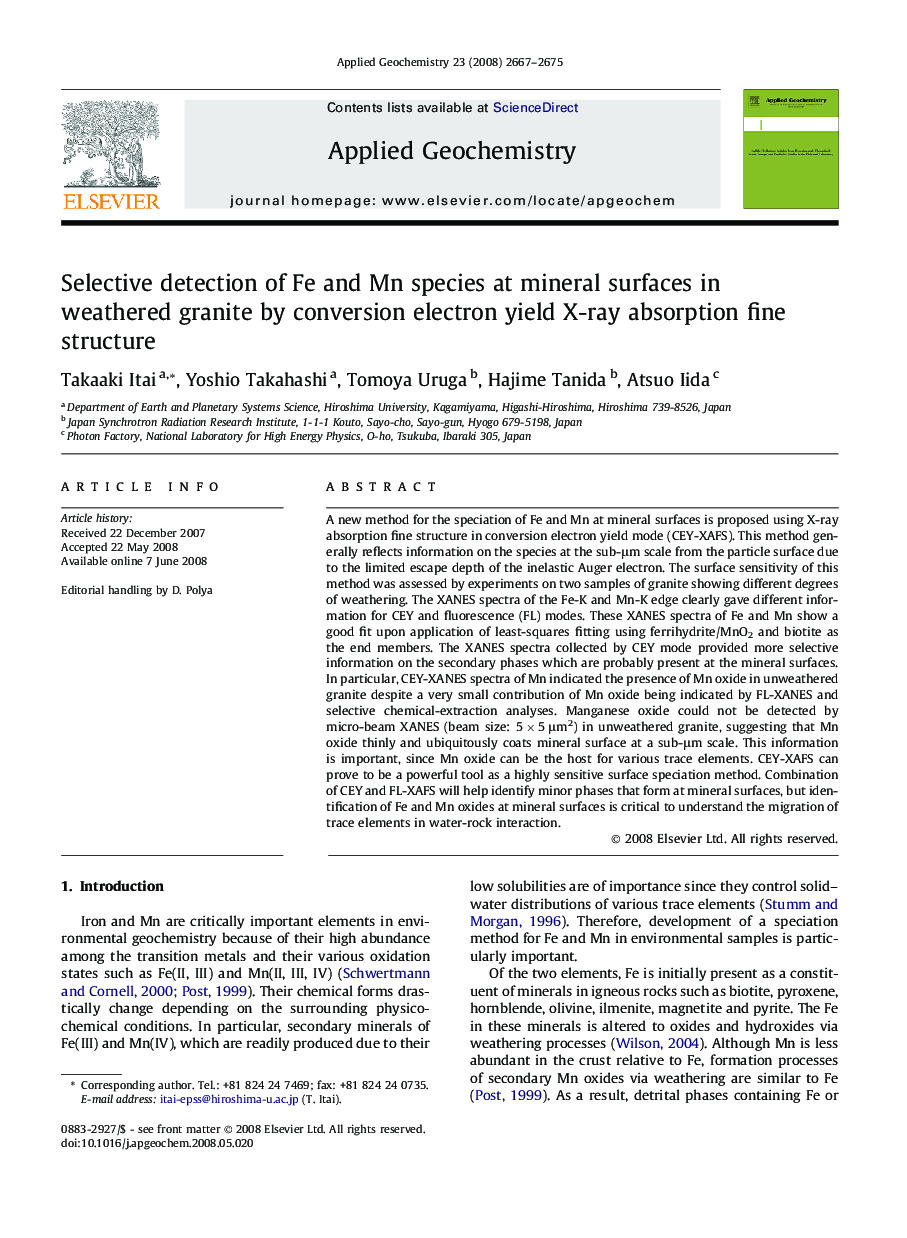| Article ID | Journal | Published Year | Pages | File Type |
|---|---|---|---|---|
| 4437525 | Applied Geochemistry | 2008 | 9 Pages |
A new method for the speciation of Fe and Mn at mineral surfaces is proposed using X-ray absorption fine structure in conversion electron yield mode (CEY-XAFS). This method generally reflects information on the species at the sub-μm scale from the particle surface due to the limited escape depth of the inelastic Auger electron. The surface sensitivity of this method was assessed by experiments on two samples of granite showing different degrees of weathering. The XANES spectra of the Fe-K and Mn-K edge clearly gave different information for CEY and fluorescence (FL) modes. These XANES spectra of Fe and Mn show a good fit upon application of least-squares fitting using ferrihydrite/MnO2 and biotite as the end members. The XANES spectra collected by CEY mode provided more selective information on the secondary phases which are probably present at the mineral surfaces. In particular, CEY-XANES spectra of Mn indicated the presence of Mn oxide in unweathered granite despite a very small contribution of Mn oxide being indicated by FL-XANES and selective chemical-extraction analyses. Manganese oxide could not be detected by micro-beam XANES (beam size: 5 × 5 μm2) in unweathered granite, suggesting that Mn oxide thinly and ubiquitously coats mineral surface at a sub-μm scale. This information is important, since Mn oxide can be the host for various trace elements. CEY-XAFS can prove to be a powerful tool as a highly sensitive surface speciation method. Combination of CEY and FL-XAFS will help identify minor phases that form at mineral surfaces, but identification of Fe and Mn oxides at mineral surfaces is critical to understand the migration of trace elements in water-rock interaction.
